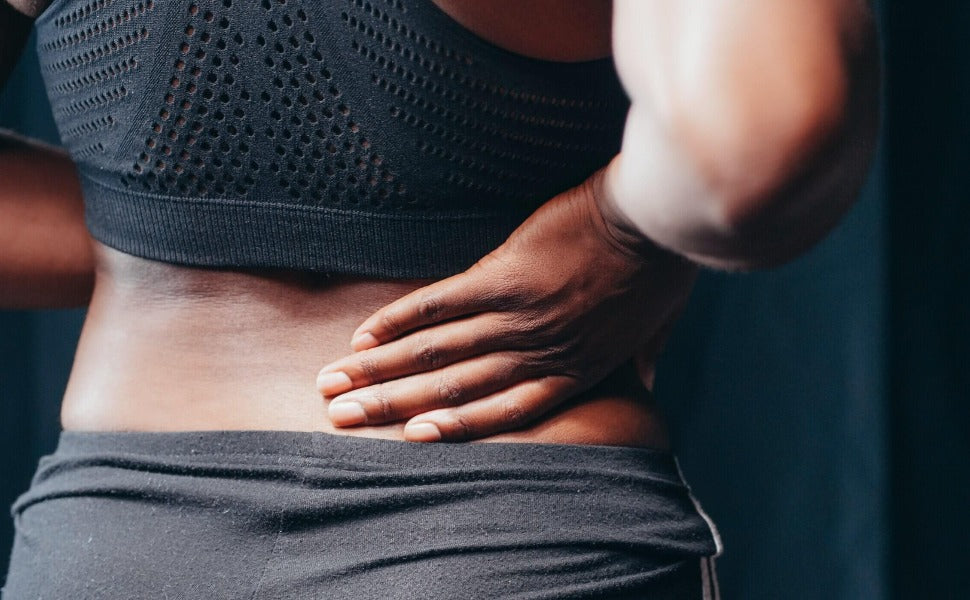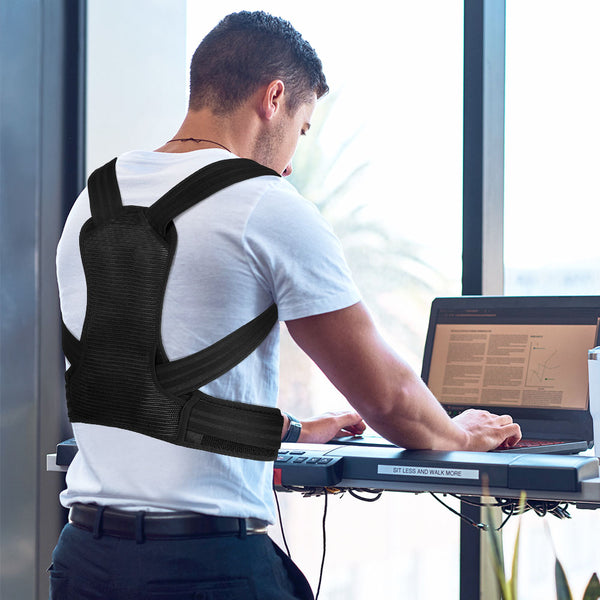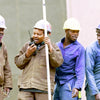Should You Sit with a Best Back Brace on

and correct the posture of people who have to sit for longer intervals, and also for people who already suffer from this disorder. However, long-term dependency on the brace should be avoided. The tips to follow are that you should stand and move every two hours, continuously wearing the brace for no more than four hours, and choosing comfortable ones that suit your body type.
Benefits of Back Brace
A back brace supports the spine and soft tissues of the back, easing pressures from prolonged stress and strain. It may alleviate pain, prevent injury, and it can also improve one's posture. Because of its design to place pressure on the abdominal and waist areas, it helps in easing the stress off the spine—particularly in the lumbar and thoracic regions.
By doing so, the back brace realigns these bones in their natural position and therefore nurtures spinal health. This might include: reducing the load on intervertebral discs, ligaments, and muscles—particularly during such activities as bending, heavy lifting, or posture sustained over a long time in the sitting position. Thus, the support reduces non-physiological loads put on the spine and helps avoid problems such as disc herniation or so-called spinal slippage.
Back braces can alleviate the symptoms of in certain patients. Fo</u>r example, for patients with compression fractures, herniated discs, and scoliosis, a back brace can reduce pain and discomfort in an area of the spine and, therefore, can enhance one's mobility in performing activities of daily living. This is because the brace provides support to the spine by limiting excessive movement due to pathological changes.
When to Wear It
A back brace is not intended to be worn all the time. This counts and depends on what your own individual needs are. Worn at the right time, it gives full benefits without running the risk of over-reliance on it that could lead to muscle atrophy or even loss of function.
A back brace can be very helpful for people who have to sit for long hours of the day, such as office workers or drivers, by minimizing spinal and muscular fatigue. Long hours of poor sitting badly bend or misalign the natural curvature of one's spine, especially in the lumbar region, leading to chronic pain in the lower back over time. It is in instances like these that a back brace keeps the spine straight, enabling it to retain its natural curvature while minimizing pressure caused by poor posture.
A back brace also provides very good support during . Whenever you do weight-lifting or even shift heavy objects from one place to another, the back brace protects your spine with greater efficiency and reduces any chances of an injury because of ill-practical movement. The twisting and bending forces on the spine can be limited by use of a brace during exhausting activity and help prevent exercise-related injuries.
A back brace isn't suitable for wear over a longer period. Long-term wear will render the muscles of one's back weak thus depleting the body's natural support mechanisms. The duration of wear needs to be adjusted according to personal needs, but most recommend no more than four hours in one day and with breaks included, so one isn't overly dependent on it.

Correct Posture
Prevention or relief of back pain through proper posture is the most important key. or standing posture, even while wearing a back brace, will put strain on the spine. A back brace helps to keep the natural curve of the spine; however, this does not replace the active support by the body nor appropriate posture. Therefore, posture correction in daily life must be given more focus.
Correct posture involves sitting back in the hips when sitting, and your back should assume the contour of the chair's backrest, while sustaining the spine naturally. The best sitting posture is sitting with both your feet flat on the floor with the knees at the same height as the hip to avoid too much bending or stretching. Wear the back brace in such a way that the support maintains the spine in this curvature and does not allow excessive forward or backward bending. If the design of the brace is improper, the support may be too hard or too weak, thus leading to an inappropriate sitting posture.
Standing posture is equally important. During standing, the weight must be evenly distributed between both feet in order not to create a heavy load on one side. The spine should naturally be upright, while the pelvis should assume a neutral position. Overbending or leaning forward increases pressure on the spine, causing discomfort in the lower back. Standing while wearing a back brace can offer additional support to help maintain more stable postures and decrease strain from the body.
It decreases the pressure on the back in cases of sitting or standing; therefore, posture enhances comfort while avoiding spinal deformities or even muscle strain that results from poor posture. This can easily be maintained with the help of a back brace to avoid long-term problems emanating from improper body alignment.
Comfort Matters
While determining the efficiency of a , comfort becomes the most prior consideration. Wearing a back brace should not be comfortable concerning its fit but also important for its functional benefits. A poorly designed or worn brace may cause pain or some health issues to the wearer.
A comfortable back brace ought to be breathable and have soft lining materials to avoid any discomfort or overheating of the body during long periods of wear. When the material of the brace is not breathable, especially in extremely hot weather conditions, it will result in excessive sweating, discomfort, or even skin irritation. Thus, it would be advisable to go for braces that have soft elastic inner linings which can comfortably adjust to the shape of the body, hence lessening friction, therefore reducing skin irritations.
It is important that the design of the back brace be related to an ergonomic design for the different shapes and needs of body types. The measurement for size and tightness should correspond with an individual's waist and chest measurements, avoiding a too-loose or just uncomfortably tight condition. A too-loose one will never give support, while a too-tight one risks hindering circulation and consequently becomes uncomfortable.
When wearing the back brace, one needs to ensure that it is set to a tightness adequate to provide support, while not at the same time compressive. The brace should be adjusted from time to time so that comfort is gained with it on and the best support is offered throughout the day.

Mobility Tips
Although the back brace is very effective in giving support, it cannot replace the muscling of the back and its natural mechanisms. Wearing a brace for long periods may cause the back muscles to weaken, making one dependent on the brace. While wearing a back brace, therefore, it is advisable that one should not forget to continue with normal activity and exercises that can maintain the strength and flexibility of the back muscles.
This prevents back problems through regular exercises. It strengthens the core muscles and the back muscles, improving the stability of the spine and hence preventing spinal problems arising due to muscle imbalance. The exercises normally performed for the back include core muscle strength training, yoga, and Pilates. These exercises strengthen the back and abdominal muscles, thus providing more support to the spine.
Not staying in one position for too long is equally important. Sitting and standing for a long time increase stress on the spine and facilitate the development of back pain. Besides doing some light stretches, it would be great to get up and walk every hour or so. Standing, shift your weight from one leg to the other to avoid the pressure prolonging on vertebrae.
This would include picking up, bending forward to do so, lifting heavy items, and should be accomplished with the use of the legs and not the back. One should not bend forward at the waist but, instead, bend the knees and lift the object using the legs. It is also important, even when using a back brace, to continue good movement mechanics and to avoid muscle stiffness resulting from long static posturing.
Common Mistakes
Certain mistakes are associated with the use of the back brace, and these reduce its effective role; sometimes, they may even cause harm to the body. Finding and avoiding these mistakes is, therefore, necessary for users to get the best out of their back braces.
A common mistake people make is on the back brace. Whereas the brace gives immediate relief, it is not a substitute for function in the back muscles. Prolonged dependency on the back brace weakens the muscles in the back and creates risks where there may be no need for them. The brace, therefore, should only be used when necessary and not as a long-term solution.
Another common issue that arises is when one wears the back brace for too long. Although many people wear braces for extended periods when they experience back discomfort, this is not the perfect approach. The more reliant one is on the brace, the greater the chance of increasing dependency while decreasing the natural support of the back muscles. This is best done if the wearing time is limited to no more than four hours a day, and this is in conjunction with adequate physical activity and strengthening exercises in order to help rebuild back muscle strength.
Other common mistakes include incorrect wear, where it can be worn either too tight or not correctly. Wearing it too tight will create pressure on the spine and soft tissue due to the unnaturally occurring compression, which would result in poor circulation, redness, or numbness. Proper fitting should be followed, making sure that the brace is comfortable yet not too confining.

Long-Term Use
While a back brace used in the long term can help relieve pain and can support the body in back conditions, this should not replace the muscle strength of the body. When there is a prolonged and excessive use of a back brace, the natural function of the spine and muscles is consequently weakened. Use of a back brace is suitable in specific situations and not for the replacement of overall .
Wearing a back brace must be complemented with daily exercises aimed at maintaining good posture and healthy lifestyle practices to give one's back muscles strength and cut down dependence on the brace. This will certainly give a boost to your core muscles













